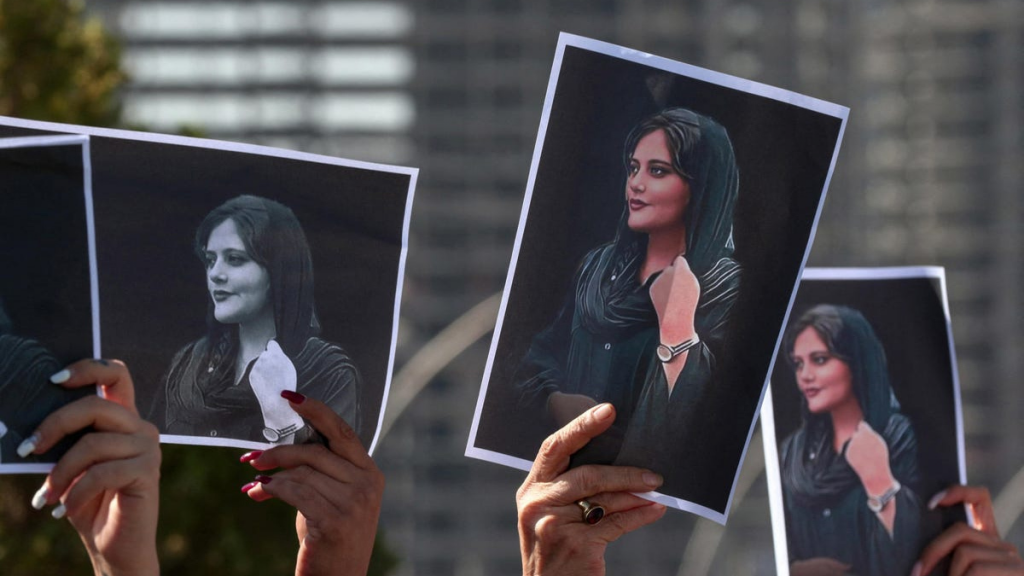
According to her family and local media, 22-year-old Jina “Mahsa” Amini was detained by Iran’s morality police on September 13 for “improperly” wearing her hijab and maltreated severely. She passed away three days after being taken into custody.
Iran erupted in protest when reporters Niloofar Hamedi and Elahe Mohammadi (both of whom are currently in prison) recounted the horrific event. The movement was inspired by women who slashed their hijab hair and led chants of “women, life, freedom.”
What began as an outcry against the regime’s treatment of women has grown into a global revolution demanding regime change, which is why Amini’s death is so significant and why Forbes included her on its list of the World’s 100 Most Powerful Women. As of November 30th, 79 million people had used the hashtag #Amini to refer to the theocratic government’s mistreatment of its citizens.
Nina Ansary, a historian and advocate for women’s rights, asserts that “Mahsa Amini is now a global symbol of freedom, not just in Iran.”
Ansary and other members of the Iranian community believe that the ongoing protest, which is now in its eightieth day, is a challenge to the Iranian dictatorship, which by law considers women to be second-class citizens. On March 8, 1979, less than a month after the Islamic Revolution took power, hundreds of women marched through Tehran in protest of the new government’s regulations.
Roya Boroumand, who founded the Abdorrahman Boroumand Center for Human Rights in Iran, asserts that post-revolutionary legislation served to institutionalize discrimination further. It has been said of American women, “Here, their life and testimony are worth half as much as a man’s, and they have lost the right to divorce and child custody.”
Mahsa Amini represents freedom around the world
Other eras inspired a change in perspective. Masih Alinejad, a journalist and activist, has released video of smaller groups of women disobeying Iran’s discriminatory laws over the past eight years.
The death of Amini motivated Iranians and influenced the world’s attention. Why?
Mahsa is simply another Iranian Kurd in Alinejad’s eyes. We could not have foreseen such widespread unrest in Iran if the Kurdish population hadn’t turned her funeral into massive protests against the mandatory hijab and the Islamic Republic.
Amini was also approachable, which was an added bonus. The director of Iran’s human rights organization, Hadi Ghaemi, asserts, “She was not an activist.” As a result of the widespread harassment, arrest, and even physical assault of Iranian women by the country’s morality police whenever they leave the house. “Her face and her experience were very intimately and tangibly familiar to every family in Iran, because every time their mothers, sisters, and their daughters go out of the house, they have been harassed by the morality police, or detained or even beaten.”
The Revolutionary Guard of Iran had previously eliminated other individuals. According to human rights groups, 500 protesters have been killed, while the Iranian government claims only 300 protesters have died. Since last month, the UN Human Rights Council has been investigating violations of human rights.
Ansary and other activists are hopeful that Iran will eventually reform with the aid of the international community. She explains, “Women won’t relent,” They did not sacrifice decades, the past two and a half months, to return home, you know. A powerful government. In consequence, protesters have been calmed down. Ghaemi expresses concern that the administration may rely on charisma to implement cosmetic changes as opposed to genuine reform.
On Sunday, December 4, his prediction was proven accurate. It has been reported that Iran’s attorney general disbanded the country’s morality police, but there is no confirmation of this and it is too early to declare the agency dead.
The Iranian group of people could be required to prepare for a protracted and escalating conflict. Although Iranian women hold the keys to power, their lives are a living hell. She tells the tale of a teenage girl whose mother forbade her to participate in a protest because it could cost her her life.
I can’t choose what I wear, the teen told her mom. I don’t have the right to dance in public. By law, I’m not allowed to be myself. “‘I’m already dead,’” Alinejad says the girl told her mother. “‘But when I go to the streets, I have a dream. And that makes me alive.’”
Source NFT Newspro



